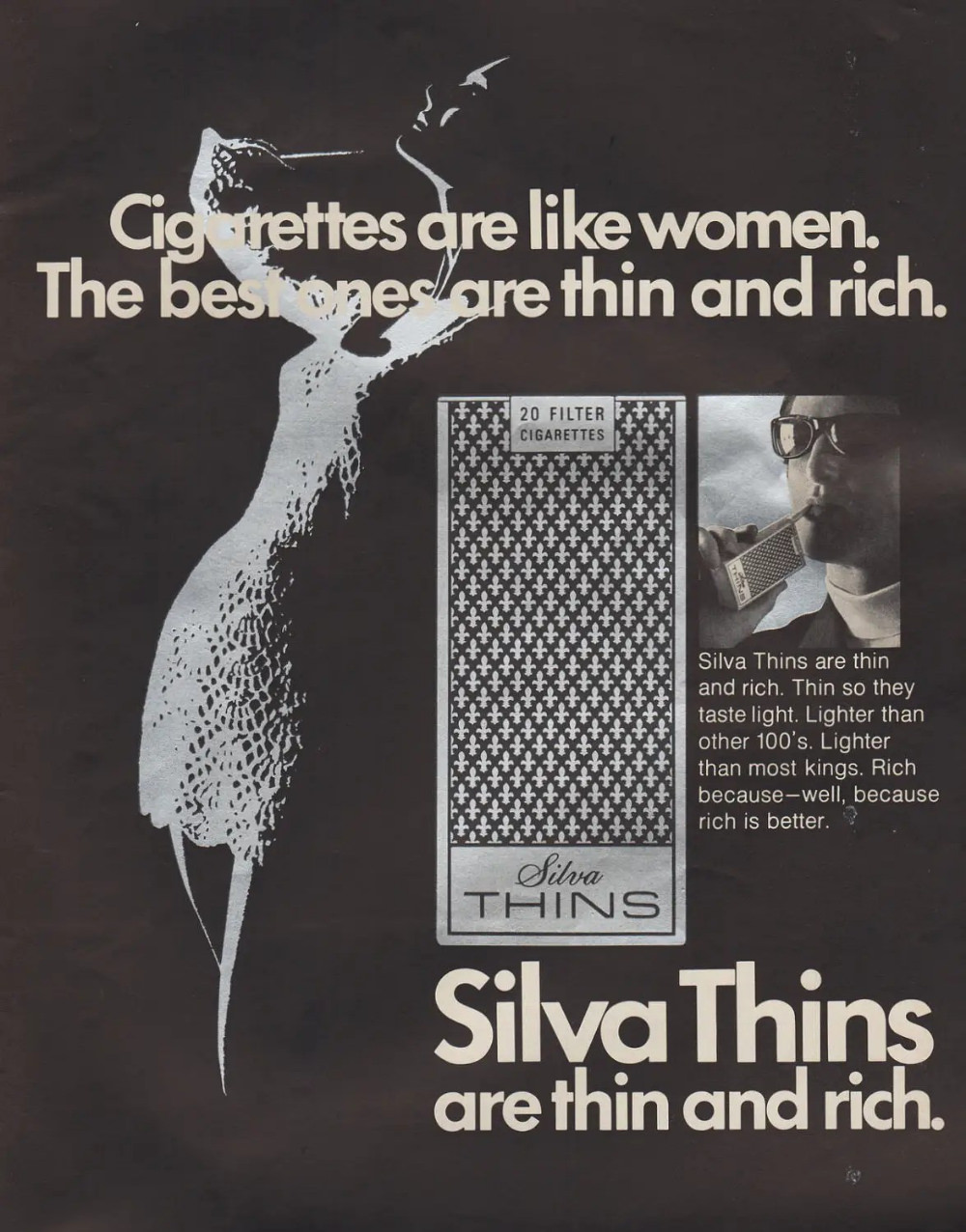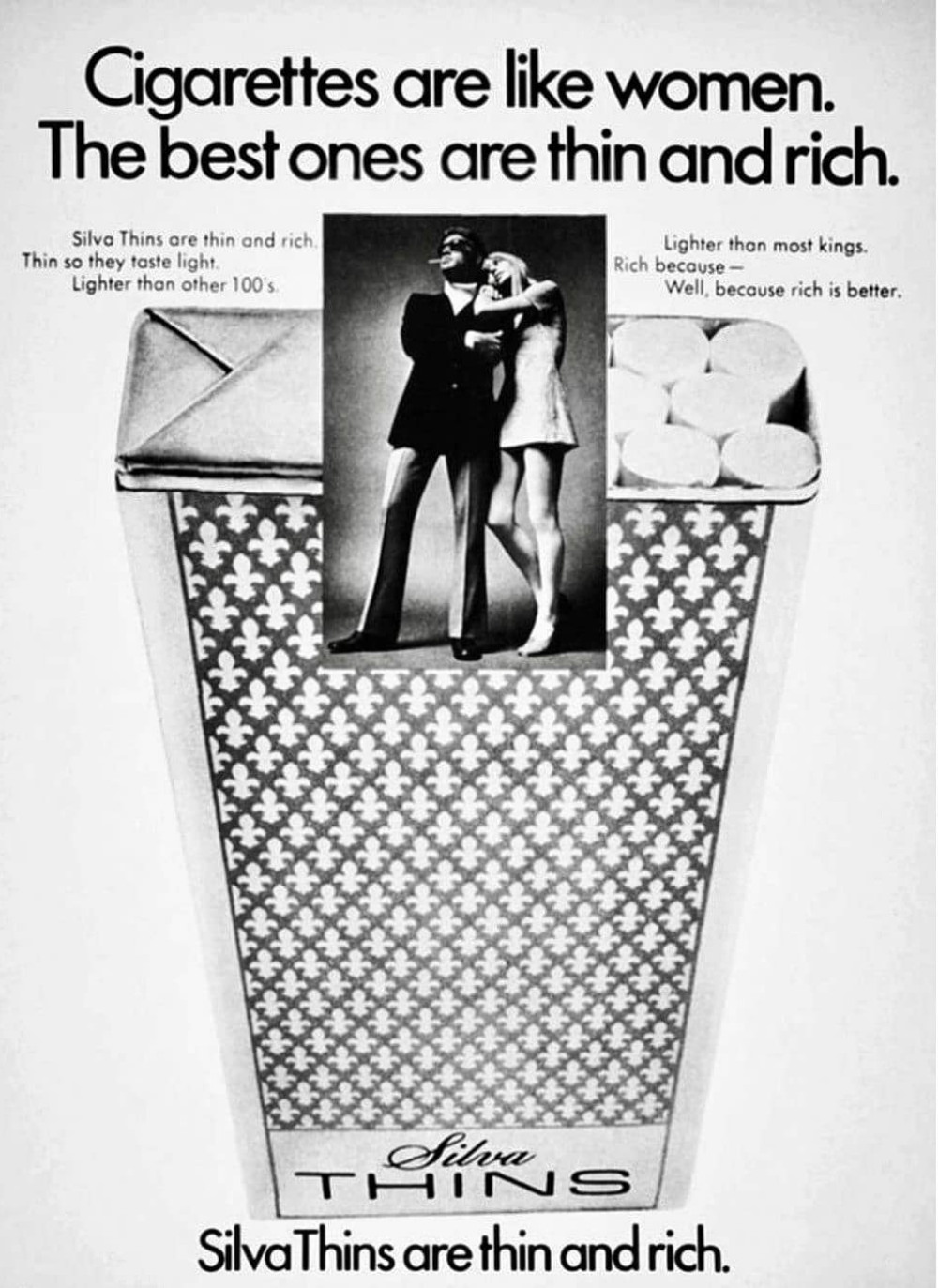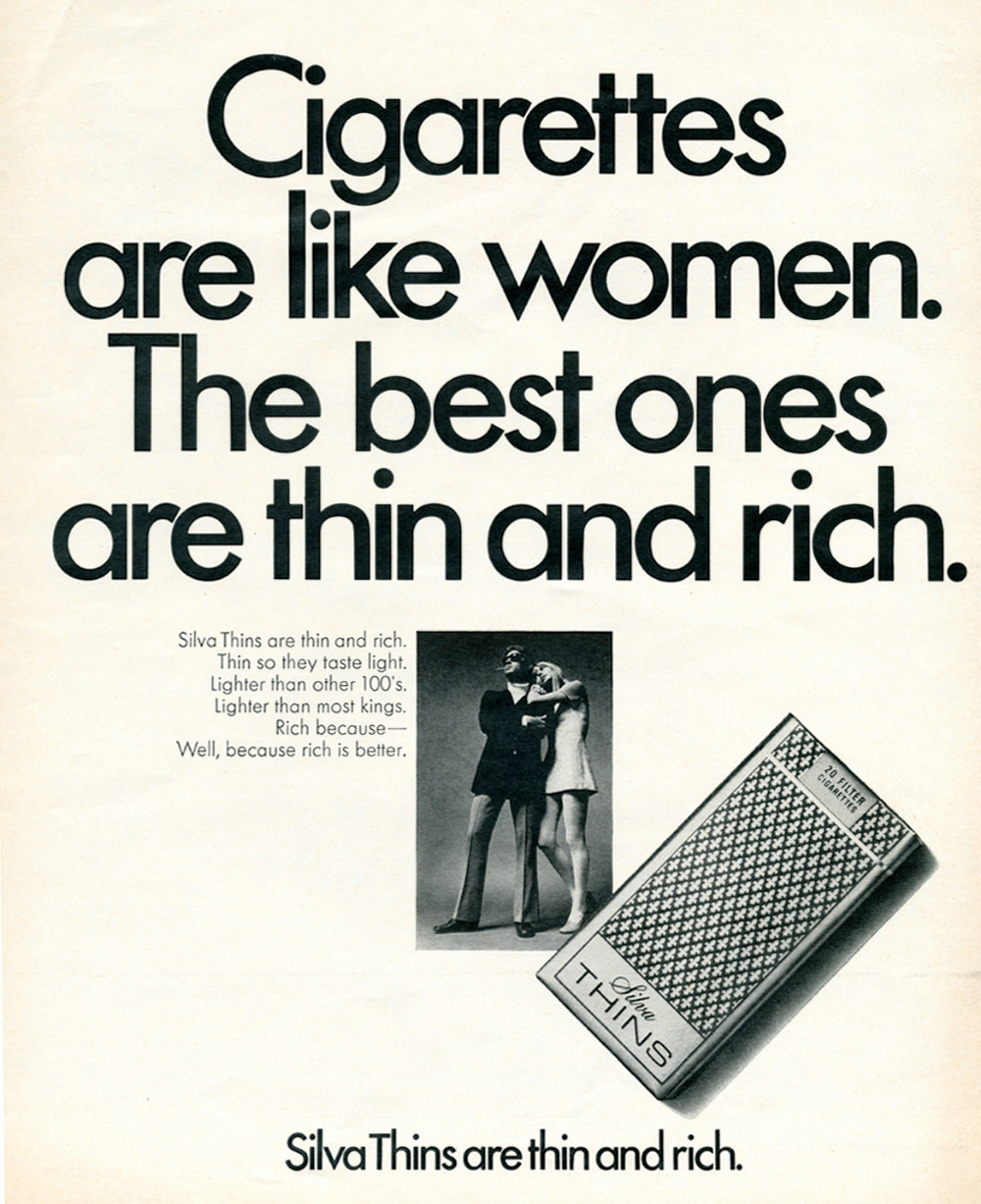“Cigarettes are like women. The best ones are thin and rich.” This catchy and controversial phrase epitomizes the advertising style of the 1960s, a time when advertising knew no bounds and pushed the envelope to grab the attention of consumers. This slogan, part of a series of advertisements for Silva Thins cigarettes, continues to intrigue and incite debate, even decades later.
1960s – The Dawn of Bold Advertising
The 1960s was a time of revolution in many aspects of society, and advertising was no exception. There was a rise in consumerism and brands were increasingly vying for consumer attention. This led to the emergence of bold, and often controversial, advertising campaigns. Advertisements moved beyond simple product promotion to embodying a lifestyle, a statement, or even an attitude.
Silva Thins – Thin, Rich, and Controversial
Amidst this advertising revolution, Silva Thins, a cigarette brand, launched a series of ads that reflected this bold approach. Their tagline, “Cigarettes are like women. The best ones are thin and rich,” embodied their branding strategy perfectly. These ads showcased the product as sleek, classy, and desirable, mirroring the evolving cultural and societal attitudes of the time.
The Silva Thins advertisements were visually minimalist but rich in innuendo. The sleek, elongated design of the cigarette was juxtaposed with a pithy, tongue-in-cheek slogan, making a bold and memorable statement. The advertisements played on stereotypes and used humor to appeal to their target audience, making them a talking point and ensuring the brand remained in the public consciousness.
Impact and Modern Interpretation
However, seen through the lens of the 21st century, these advertisements also raise questions about gender stereotypes and objectification. This controversial tagline may have been the norm in the 1960s, but in today’s society, it is seen as reductive and problematic, casting women and cigarettes in the same light, and using wealth and thinness as markers of worth.
The Silva Thins ads provide a fascinating glimpse into the cultural attitudes and marketing strategies of the 1960s. They serve as a reminder of how far we have come in terms of gender equality and how the language of advertising has evolved over the decades.
While modern audiences may find these ads controversial, there’s no denying that they were effective in their time. They were conversation starters, they stood out, and they left an indelible mark on the advertising landscape of the 1960s.





